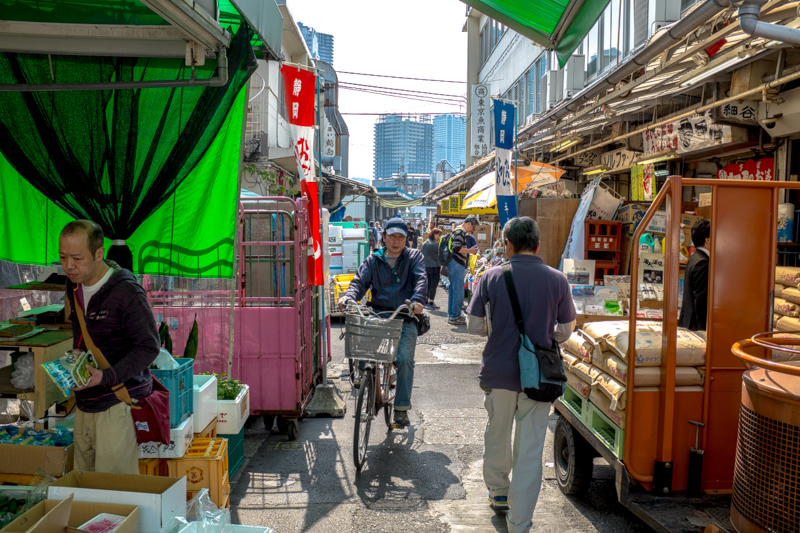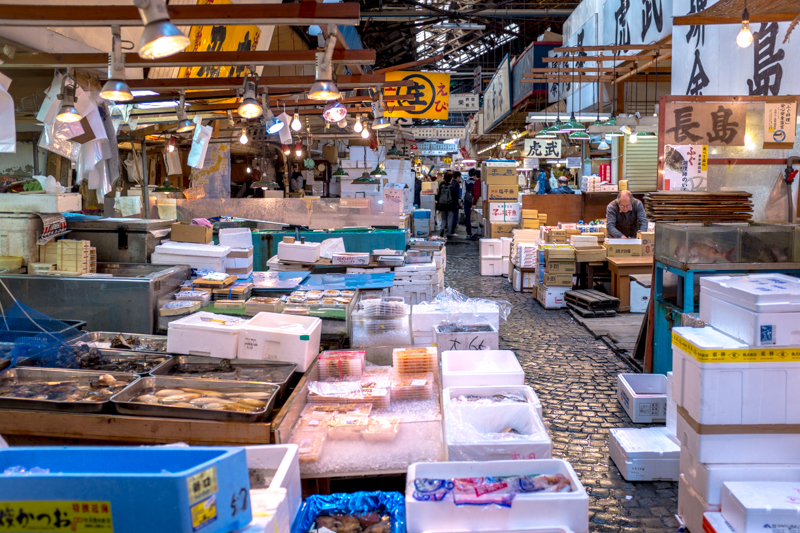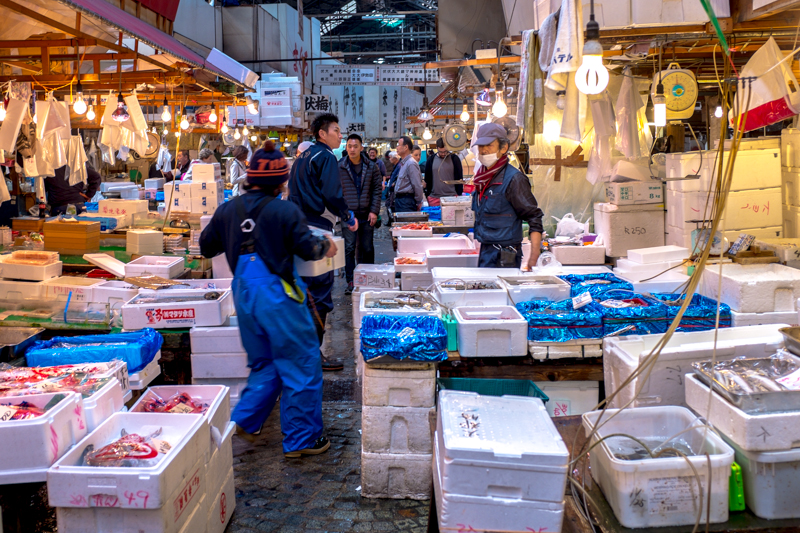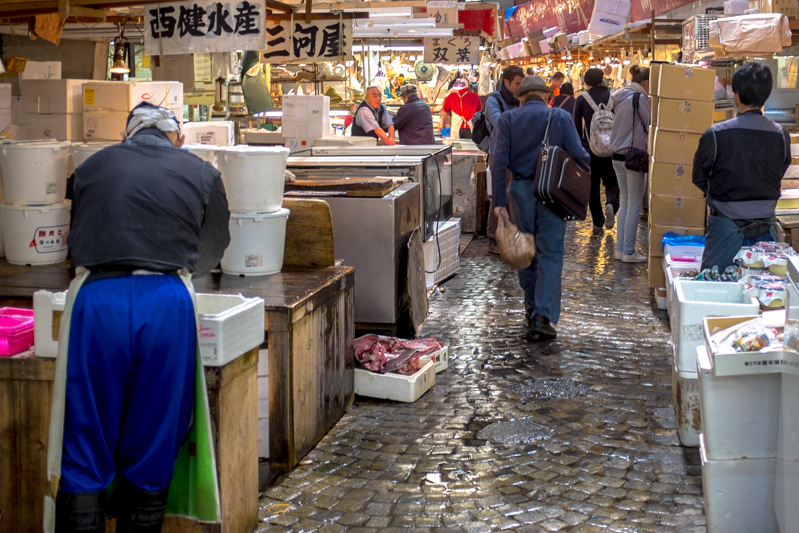Tsukiji Fish Market is the largest wholesale fish and seafood market in the world and handles over 600,000 tonnes of seafood in 480 varieties each year.
The original fish market was located in Nihonbashi and was known as Uogashi (“fish quay”). It was an important part of Tokyo life from 1606 until its destruction in the Great Kanto Earthquake in 1923, which led to it being relocated to its current site in Tsukiji. The market is actually one of several locations of the wider Tokyo Metropolitan Central Wholesale Market and handles fruit and vegetables too.
The Tsukiji Fish Market occupies prime real estate in a very central part of Tokyo which has led to plans to move the market to move to a new site at Toyosu in Koto Ward in 2014, with high rise apartments slated to be built where the market currently stands. Due to greater than expected contamination at the heavily polluted site, the move has been delayed until 2016.
The market consists of 2 main sections. The outer market (“jōgai-shijō”) contains a variety of stores selling restaurant supplies, groceries and a number of sushi restaurants.



The inner market (“jōnai-shijō”) is the wholesale market in which around 900 vendors process and sell fish from small stalls.
The market opens most days of the week at 3AM. Auction houses weigh and price the fish and licensed buyers are allowed to inspect the fish in order to ascertain what they would like to bid for at the auction. The auction begins at 5:30AM and lasts for approximately 10 minutes. Up to 120 tourists are allowed to view the auction each day, with registration opening at 5:00AM. I was interested in seeing the auction, but wasn’t willing to wake up that early so didn’t visit until the auction was over and the market itself was open to walk around at 9:00AM.



The market is extremely busy with traders on foot, trucks, forklifts and small vehicles moving around constantly. There’s no designated pathway for tourists to stick to and groups larger than 5 are not allowed. They key thing is to be respectful of those working and trading at the market. Be alert, and make a conscious effort not to touch anything or get in anyone’s way.




After the auctions, many of the fish are headed, gutted, flash frozen and transported to smaller shops in the market where they are prepared for retail. The big fish, such as tuna, are cut with a band saw.





It’s easy to see why Tsukiji Fish Market is such a popular draw for tourists. It’s a unique slice of Japanese life and is completely “real”. It’s an operating, busy market and although tourists are allowed to visit there’s nothing touristy about the place at all – tourists are tolerated but certainly not encouraged. It’s a shame that in 2016 this market will no longer exist and I’d encourage anyone visiting Tokyo to check it out before it’s too late.

